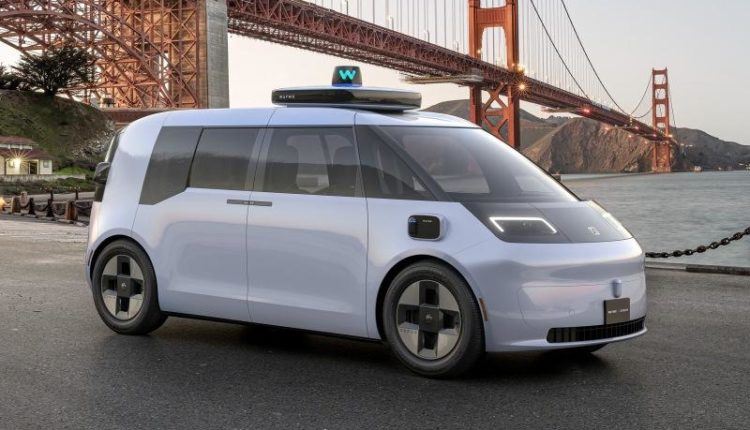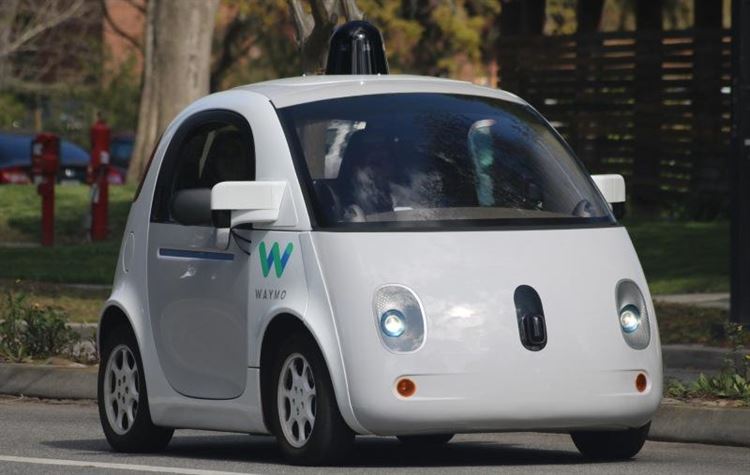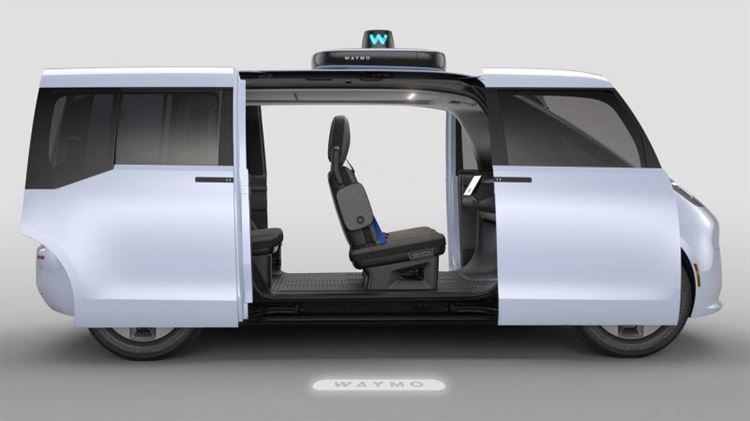Taxi without a taxi driver: Geely and Google jointly developed an unmanned compact van
The unmanned vehicle Waymo of the American computer giant Google and the new brand of electric vehicles Zeekr of the Chinese holding company Geely presented a shuttle without a steering wheel and pedals for the American market. Like all such projects, it does not have an exact launch date.
Google’s drone design is a typical "handleless suitcase" that’s hard to carry and embarrassing to leave. Google has been developing its own autonomous driving system since 2009, and by the middle of the last decade, small two-seater “Google cars" in test mode and at low speeds (up to 40 km / h) were already walking the US world with might and main. These funny cars got into accidents from time to time, but the auto industry was then euphoric about the idea of driverless – it seemed to everyone that only a few years remained before the commercial launch of models with a steering wheel and without pedals, after which the transport revolution with the abolition of the practice of car ownership and windfall profits for companies that will be the first to launch drones into production. Recall
The revolution, as we see, did not happen, there are still no full-fledged drones on the roads, a year ago Uber made a fiasco and sold its unmanned division, and Google still continues to develop its project without a pilot, which has been called Waymo since 2016. Utopian “Google cars” have been replaced by more mundane unmanned prototypes based on the Chrysler Pacifica and Jaguar I-Pace series, which are diligently in test mode (that is, under the supervision of test drivers) work in a taxi and carry passengers, but not yet bring money.
The full commercial launch of SAE level 3, 4 and 5 unmanned aerial vehicles (i.e. those that do not require human control) requires government approval and relevant legislation, but its development is too complex a task that will take years or even decades. Even the smartest Tesla FSD (Full Self-Driving) unmanned system at the moment, capable of autonomously managing the vast majority of road scenarios, formally belongs to the second level of autonomy, that is, the driver is responsible for its operation.
From all of the above, it should be clear why Waymo and Zeekr are unable to provide a launch date for their jointly developed unmanned shuttle. The car unveiled today doesn’t even have its own name, it was scheduled to be shown live in early January at CES in Las Vegas, but Google refused to attend, fearing the SARS-Coronavirus CoV-2 Omicron. strain, so the first absence took place this New Year’s week.
Waymo and Zeekr unmanned shuttle
For the "iron" part of the shuttle, the newly minted Chinese brand Zeekr and its China-European Automotive Technology Center (CEVT) in Gothenburg, Sweden were responsible. It is based on the new SEA modular platform for electric vehicles with a dead battery in the floor. The floor of the shuttle cabin is also absolutely flat, there is a significant distance between the front and rear seats, approximately the same as in the British Arrival Car electric taxi presented the other day. All seats are passenger, in the center of the front panel there is a single control monitor for all, with the help of which the parameters of the trip, microclimate and entertainment are set.
Waymo and Zeekr unmanned shuttle
One panoramic lidar is installed on the roof of the shuttle, the rest are on the side walls. In general, the design is as simple and concise as that of the Arrival Car mentioned above, only the doors are not hinged, but sliding. Specifications have not yet been disclosed. By the way, none of these projects that we saw in a bunch (typical examples are Amazon Zoox, Sber Flip and Cruise Origin) have a technical description, because, firstly, the launch dates are unknown and technologies are constantly evolving, and secondly, for the end user (passenger) "hardware" does not matter: an unmanned vehicle should be perceived as a function, transport a person from point A to point B and no one is interested in its design, and in terms of its characteristics, the main thing is that the cabin should be clean, cozy and comfortable .



